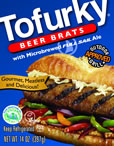Today I went to Makenna's 8th grade health class and gave a presentation about Veganism, nutrition, healthy snacking, and juicing. I had so much fun teaching and interacting with all those inquiring minds. They were a really great group of kids and they asked some very good questions. I also took my juicer in and made 2 different juices for them to try. The first was an apple-orange-carrot-lemon-ginger juice and the other a spinach-apple-parsley-mint-lemon juice. Thanks Ms. Allison for letting me come visit your class today!
This is the information I shared on handouts with the class:
v What
does Vegan mean?
A Vegan is
someone who does not eat meat, fish, or poultry. Vegans also do not use other
animal products and by-products such as eggs, dairy products, honey, leather,
fur, silk, wool, cosmetics, and soaps derived from animal products. Vegans choose this lifestyle for health,
environmental, ethical, or moral reasons.
v Vegan Nutrition
§ A Vegan diet
that includes a variety of fruits, vegetables, beans, seeds, nuts, and grains
can satisfy a person’s nutritional needs.
§ Protein needs
are met by eating foods such as lentils, beans, nuts, seeds, tofu, and dark
leafy green vegetables such as kale and spinach.
§ Plant foods do
not contain cholesterol, so Vegan diets are cholesterol free and generally
low-fat.
§ Calcium is
obtained from dark green vegetables (kale, broccoli, okra) and calcium
fortified foods such as almond milk and orange juice.
§ Iron is found
in dried beans, soybeans, lentils, Swiss chard, tempeh, raisins, watermelon, and
kale.
§ Omega-3 Fatty
Acid production can be maximized by including things such as flaxseeds,
hempseeds, and walnuts in the diet.
§ Vitamin B12
requirement can be fulfilled by consuming nutritional yeast or Vegan B12
sublingual supplements.
§ It is important
to obtain as many nutrients as possible from whole food sources, which means
foods in their most natural form, to achieve the maximum health benefit. Obtaining nutrition from plant sources helps
decrease incidences of obesity, heart disease, cancer, diabetes, arthritis, and
other chronic conditions. Many processed
foods are devoid of vitamins, minerals, and phytonutrients and they are packed
with sugar, fat, and salt.
v Resources/References
that I often use for information, inspiration, and motivation
v My info
§ My blog- http://onewyomingvegan.blogspot.com Please check out my blog for more information
and recipes. Also, my contact info is
listed on my blog so that you can contact me with any questions/comments.
Healthy Snack
Ideas
·
Fruit
Water
1 apple, sliced
1 lemon, sliced
1 orange, sliced
1 pear, sliced
4 large strawberries, sliced
Handful of raspberries
Handful of mint leaves
½ gallon water
Place all ingredients in a pitcher and chill for at least
2 hours. Serve over ice.
·
Citrus
Water
1 orange, sliced
1 lemon, sliced
1 lime, sliced
½ gallon water
Place all ingredients in a pitcher and refrigerate for at
least 2 hours. Serve over ice.
v Hummus and Veggies
1 can chickpeas (garbanzo beans)
1 Tablespoon lemon juice (or more, to taste)
Can also add pepper, cilantro, parsley, olives, sun-dried
tomatoes, green chiles, or anything else that sounds good.
Place ingredients in a food processor and combine until
smooth.
v Banana Ice Cream
2 ripe bananas
1-2 Tablespoons natural peanut butter (without High
Fructose Corn Syrup)
Chocolate chips
In food processor, blend bananas and peanut butter until
smooth. Place in bowl and stir in
chocolate chips. Place in freezer for 15
minutes or until desired texture is reached.
This can also be eaten like pudding when not put in the freezer.
v Yummy Green Smoothie
1 cup unsweetened almond milk
6-8 frozen peach slices
1/3 cup vanilla almond milk yogurt
(optional)
2 handfuls of baby spinach leaves
1 banana
Place all ingredients in a blender and
blend until smooth.
v Fruit Smoothie
1 cup unsweetened almond milk
Fresh or frozen fruit
Almond milk yogurt (optional)
Blend all ingredients in a blender until
smooth.
Other easy healthy snacks: fresh fruit, raw veggies, raw almonds,
walnuts, green leafy salads.













